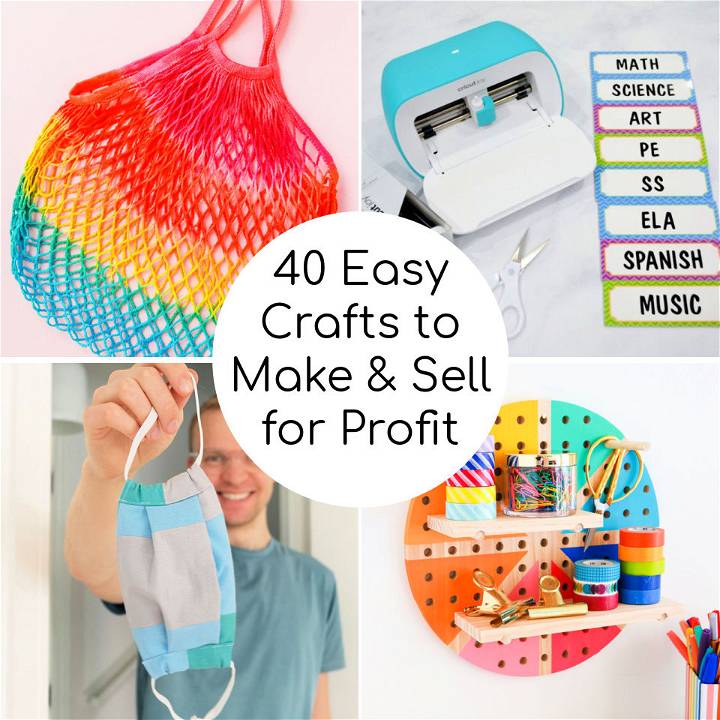Unleashing Your Creativity: Exploring the World of Handmade Products
The handmade market is a thriving industry, filled with opportunities for creative entrepreneurs to turn their passions into profitable ventures. With the rise of online marketplaces and social media, it’s never been easier to showcase and sell handmade goods to a global audience. For those looking to monetize their hobbies, making and selling handmade products can be a fulfilling and lucrative career path. In fact, many people have successfully turned their love of crafting, sewing, or woodworking into successful businesses, earning a good income from selling their wares online and in-person.
One of the key benefits of making and selling handmade products is the ability to create unique and personalized items that can’t be found in mass-produced stores. This allows artisans to differentiate themselves from larger companies and attract customers who are looking for one-of-a-kind items. Additionally, the handmade market is constantly evolving, with new trends and techniques emerging all the time. This means that entrepreneurs can stay ahead of the curve by adapting to changing consumer demands and preferences.
Some of the most popular handmade products to make and sell include jewelry, candles, textiles, and home decor items. These products are often in high demand, particularly during peak shopping seasons like holidays and special occasions. By focusing on creating high-quality, unique items that meet the needs of their target market, handmade entrepreneurs can build a loyal customer base and establish a successful business.
When it comes to finding great things to make and sell, it’s essential to consider the current market trends and consumer demands. Researching popular products and identifying gaps in the market can help entrepreneurs create unique and in-demand items. Additionally, understanding the target audience and their preferences can help artisans create products that meet their needs and exceed their expectations.
By turning their hobby into a profitable venture, handmade entrepreneurs can enjoy the satisfaction of creating something with their own hands and bringing joy to their customers. With the right mindset, skills, and knowledge, anyone can succeed in the handmade market and turn their passion into a profitable business.
How to Identify Your Niche: Finding the Perfect Product to Sell
Identifying a profitable niche in the handmade market is crucial for success. With so many different products to choose from, it can be overwhelming to decide which ones to focus on. However, by researching popular products, understanding your target audience, and finding a unique selling proposition, you can increase your chances of success.
One of the best ways to identify a profitable niche is to research popular products on online marketplaces such as Etsy and eBay. Look for products that are consistently selling well and have a high demand. You can also use tools such as Google Trends and Amazon Best Sellers to find popular products. Additionally, you can attend craft fairs and markets to see what types of products are in demand.
Understanding your target audience is also crucial for identifying a profitable niche. Who are your customers? What are their interests and needs? What types of products are they looking for? By understanding your target audience, you can create products that meet their needs and exceed their expectations.
Another important factor in identifying a profitable niche is finding a unique selling proposition. What sets your products apart from others in the market? Is it the materials you use? The techniques you employ? The unique designs you create? By finding a unique selling proposition, you can differentiate yourself from others in the market and attract customers who are looking for something unique.
Some great things to make and sell in the handmade market include jewelry, candles, textiles, and home decor items. These products are often in high demand, particularly during peak shopping seasons like holidays and special occasions. By focusing on creating high-quality, unique items that meet the needs of your target market, you can build a loyal customer base and establish a successful business.
When identifying a profitable niche, it’s also important to consider the competition. Who else is selling similar products? How can you differentiate yourself from them? By understanding the competition, you can create products that stand out in the market and attract customers who are looking for something unique.
From Idea to Reality: Bringing Your Product to Life
Once you have identified a profitable niche and developed a unique selling proposition, it’s time to bring your product to life. This involves turning your idea into a tangible product that meets the needs of your target market. In this section, we will provide tips and advice on how to prototype, test, and refine your product to ensure it is of high quality and meets the needs of your customers.
Prototyping is an essential step in the product development process. It allows you to test and refine your product before investing in large-scale production. When creating a prototype, consider the materials, design, and functionality of your product. Ask yourself, “Does it meet the needs of my target market?” “Is it durable and of high quality?” “Can it be produced efficiently and cost-effectively?”
Testing your product is also crucial to ensure it meets the needs of your target market. Consider conducting market research, gathering feedback from potential customers, and testing your product in different environments. This will help you identify any flaws or areas for improvement and make necessary adjustments before launching your product.
Refining your product is an ongoing process that involves continuously gathering feedback and making improvements. Consider using customer feedback to make adjustments to your product, and stay up-to-date with the latest trends and technologies in your industry. This will help you stay ahead of the competition and ensure your product remains relevant and in-demand.
Some great things to make and sell in the handmade market require a high level of craftsmanship and attention to detail. For example, jewelry making, woodworking, and textiles require a great deal of skill and precision. However, with the right tools, materials, and techniques, you can create high-quality products that meet the needs of your target market.
When bringing your product to life, it’s also important to consider the production process. Consider the materials, equipment, and labor required to produce your product. Ask yourself, “Can I produce my product efficiently and cost-effectively?” “Do I have the necessary skills and expertise to produce my product?” “Can I outsource production to a third-party supplier?”
Marketing Magic: Effective Strategies for Selling Your Handmade Products
Once you have created a high-quality, unique product, it’s time to think about marketing and sales. In this section, we will discuss various marketing strategies for selling handmade products, including social media marketing, craft fairs, and online marketplaces.
Social media marketing is a powerful tool for handmade entrepreneurs. Platforms like Instagram, Facebook, and Pinterest provide a great way to showcase your products and connect with potential customers. Consider creating a business account on these platforms and posting high-quality photos of your products. Use relevant hashtags to increase visibility and engage with your followers by responding to comments and messages.
Craft fairs and markets are another great way to sell your handmade products. These events provide a platform for you to showcase your products and connect with potential customers in person. Consider researching local craft fairs and markets in your area and applying to participate. Make sure to have a professional display and be prepared to talk about your products and answer questions from potential customers.
Online marketplaces like Etsy and eBay are also a great way to sell your handmade products. These platforms provide a large customer base and a variety of tools and resources to help you sell your products. Consider creating a shop on one of these platforms and listing your products. Make sure to follow the platform’s guidelines and policies, and be prepared to provide excellent customer service.
Creating an effective brand identity is also crucial for selling handmade products. Consider developing a unique logo, color scheme, and overall aesthetic for your brand. Use this branding consistently across all of your marketing materials, including your website, social media, and packaging.
Building a loyal customer base is also important for selling handmade products. Consider offering excellent customer service, responding to comments and messages, and providing high-quality products. Encourage customers to leave reviews and testimonials, and use this feedback to improve your products and services.
Some great things to make and sell in the handmade market include products that are unique, high-quality, and relevant to current trends. Consider researching current trends and creating products that meet the needs of your target market. Use high-quality materials and pay attention to detail to ensure that your products are of the highest quality.
Product Showcase: Inspiring Examples of Successful Handmade Ventures
In this section, we will highlight inspiring examples of successful handmade businesses, including products such as jewelry, candles, and textiles. We will discuss the key factors that contributed to their success and how readers can apply these lessons to their own ventures.
One example of a successful handmade business is a jewelry maker who specializes in creating unique, hand-stamped pieces. This entrepreneur has built a loyal customer base by offering high-quality products, excellent customer service, and a strong brand identity. The key to their success is their ability to create products that are both functional and fashionable, making them appealing to a wide range of customers.
Another example of a successful handmade business is a candle maker who uses natural ingredients and essential oils to create unique and fragrant candles. This entrepreneur has built a strong online presence by utilizing social media platforms and online marketplaces to showcase their products. The key to their success is their ability to create products that are not only beautiful but also sustainable and eco-friendly.
A textile artist who creates handmade clothing and accessories is another example of a successful handmade business. This entrepreneur has built a loyal customer base by offering high-quality products, excellent customer service, and a strong brand identity. The key to their success is their ability to create products that are both functional and fashionable, making them appealing to a wide range of customers.
These examples demonstrate that success in the handmade market requires a combination of creativity, hard work, and a strong understanding of the target market. By offering high-quality products, excellent customer service, and a strong brand identity, handmade entrepreneurs can build a loyal customer base and achieve success in the market.
Some great things to make and sell in the handmade market include products that are unique, high-quality, and relevant to current trends. Consider researching current trends and creating products that meet the needs of your target market. Use high-quality materials and pay attention to detail to ensure that your products are of the highest quality.
By following the examples of successful handmade businesses and incorporating the lessons learned into your own venture, you can increase your chances of success in the handmade market. Remember to stay focused on your target market, offer high-quality products, and provide excellent customer service to build a loyal customer base.
Overcoming Obstacles: Common Challenges and Solutions for Handmade Entrepreneurs
As a handmade entrepreneur, you may face a variety of challenges that can impact your business’s success. In this section, we will discuss some common obstacles and offer practical solutions and advice on how to overcome them.
One common challenge faced by handmade entrepreneurs is managing finances. This can include tasks such as budgeting, accounting, and pricing products. To overcome this challenge, consider using accounting software to track your expenses and income, and set aside time each week to review your finances and make adjustments as needed.
Another common challenge is finding suppliers for materials and components. This can be especially difficult if you are looking for unique or specialty items. To overcome this challenge, consider attending craft fairs and markets to connect with other handmade entrepreneurs and suppliers, and use online directories and marketplaces to find suppliers.
Dealing with competition is also a common challenge faced by handmade entrepreneurs. To overcome this challenge, consider focusing on what sets your products apart from others in the market, and use this unique selling proposition to market your products and attract customers.
Some great things to make and sell in the handmade market require a significant amount of time and effort to produce. To overcome the challenge of managing time and increasing productivity, consider using tools such as project management software and time tracking apps to stay organized and focused.
Additionally, consider outsourcing tasks such as accounting and marketing to free up time to focus on producing products and growing your business.
By being aware of the common challenges faced by handmade entrepreneurs and having a plan in place to overcome them, you can increase your chances of success in the handmade market. Remember to stay focused on your target market, offer high-quality products, and provide excellent customer service to build a loyal customer base.
It’s also important to note that overcoming obstacles is an ongoing process, and it’s essential to be flexible and adapt to changes in the market and your business. By staying proactive and focused on your goals, you can overcome any obstacle and achieve success in the handmade market.
Scaling Your Business: Strategies for Growth and Expansion
As a handmade entrepreneur, scaling your business can be a daunting task. However, with the right strategies, you can increase production, manage inventory, and expand into new markets. One key factor to consider is outsourcing certain tasks or processes to free up time and resources for more critical aspects of the business. This can include hiring contractors or freelancers to help with tasks such as photography, marketing, or accounting.
Another strategy for scaling your business is to invest in technology and automation. This can include using software to manage inventory, streamline production, and automate marketing tasks. Additionally, consider implementing a customer relationship management (CRM) system to help manage customer interactions and data.
When it comes to increasing production, consider implementing a just-in-time (JIT) inventory system. This involves producing and stocking products only as they are needed, rather than holding large amounts of inventory. This can help reduce waste, save space, and improve cash flow.
Expanding into new markets is also crucial for scaling your business. Consider selling your products through online marketplaces such as Etsy or eBay, or through your own e-commerce website. You can also explore wholesale opportunities by reaching out to local retailers or attending trade shows.
When scaling your business, it’s essential to maintain the quality and uniqueness of your products. Consider implementing a quality control process to ensure that all products meet your standards. Additionally, continue to innovate and create new products to keep your brand fresh and exciting.
Some great things to make and sell when scaling your business include products that are in high demand, such as personalized items, home decor, and jewelry. Consider creating products that are seasonal or trend-based to capitalize on current market demands.
Ultimately, scaling a handmade business requires careful planning, execution, and a willingness to adapt to changing market conditions. By implementing the right strategies and maintaining a focus on quality and innovation, you can successfully grow and expand your business.
Conclusion: Turning Your Passion into a Profitable Business
Turning your hobby into a successful business venture requires dedication, hard work, and creativity. By following the guidance outlined in this article, you can unlock the potential of your handmade products and turn them into a profitable business. Remember to stay focused on your target market, continually innovate and improve your products, and adapt to changing market conditions.
As you embark on this journey, keep in mind that there are many great things to make and sell in the handmade market. From jewelry and candles to textiles and home decor, the possibilities are endless. By identifying your niche, creating high-quality products, and implementing effective marketing strategies, you can establish a loyal customer base and drive sales.
Scaling your business requires careful planning and execution, but with the right strategies, you can increase production, manage inventory, and expand into new markets. Don’t be afraid to seek out new opportunities and take calculated risks to grow your business.
Ultimately, success in the handmade market requires a passion for creativity, a willingness to learn, and a commitment to excellence. By staying true to your vision and continually striving to improve, you can turn your passion into a profitable business and achieve long-term success.
As you look to the future, remember that the handmade market is constantly evolving, and there are always new opportunities to explore. By staying ahead of the curve and continually innovating, you can establish yourself as a leader in the industry and achieve great things.
In conclusion, turning your hobby into a successful business venture requires dedication, hard work, and creativity. By following the guidance outlined in this article, you can unlock the potential of your handmade products and turn them into a profitable business. So why not get started today and turn your passion into a successful business?








